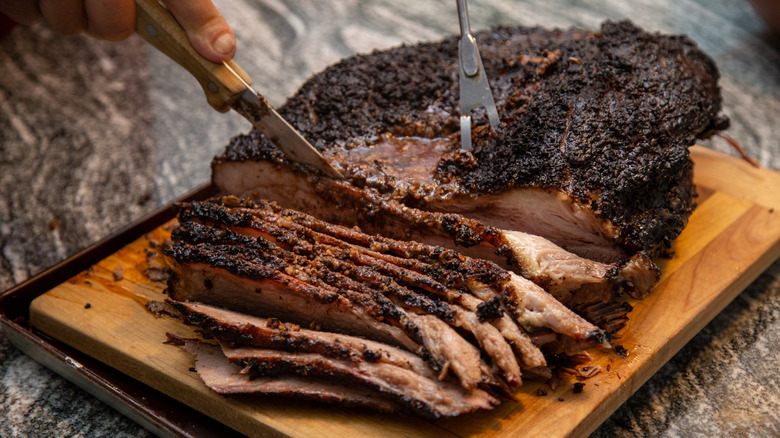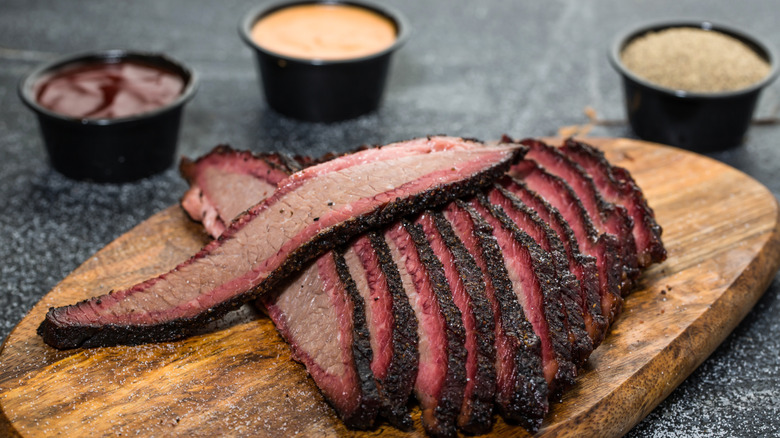The Brisket 'Bend' Test To Find The Best Cut Of Meat Every Time
Brisket is a flavorful cut of beef that can be smoked, braised, or slapped on the grill. But there is one major technique that you can do to ensure that the slab of meat is tender enough. The "bend test" is a practice done to see how tough and well-done a piece of brisket is by lifting the slice up and assessing how effortlessly it curves and, well, bends, without falling apart. Simply pick up the piece from both fleshy ends and slowly contort them until they meet. Do this during cooking to ensure better results for your homemade brisket recipe.
The quick test is necessary to reveal several things about the cut of meat. It will affirm both its tenderness and how much fat is dispersed throughout. This technique will also show how well that fat has melted throughout the cooking process and if the meat is ready to be served. The brisket will twist more freely if the fat is evenly distributed and has dissolved once it is cooked. The hack will also identify how much moisture the beef contains and if the brisket will stay juicy after being broiled.
What you should look for with the test
A perfectly smoked brisket slice will bend comfortably when held up, and the meat's ends will almost meet. If the piece itself doesn't break, the test has been successful, with the brisket being juicy and soft. When performing the exam, dangling but droopy meat slices show that the piece has been properly cooked. If the slice is hard and rigid, then the meat is still not cooked thoroughly. The beef may be too rigid due to the plump fatty layer being too chunky. Should the meat crumble during the test, then the beef was overcooked and a little too toasty for one's liking.
It's best to choose the right cut of brisket to help the bend test run smoothly. It's a good idea to keep an eye on the marbling on the meat and how the fat runs throughout the cut. Marbling matters when cooking brisket. These small patches of intramuscular fat travel along the lines of the brisket, infusing the meat with additional flavor. You want to look out for thin fat layers, as ones that are too thick won't cook the right way. This leads to failure of the bend test and the cut being dry and dense.

